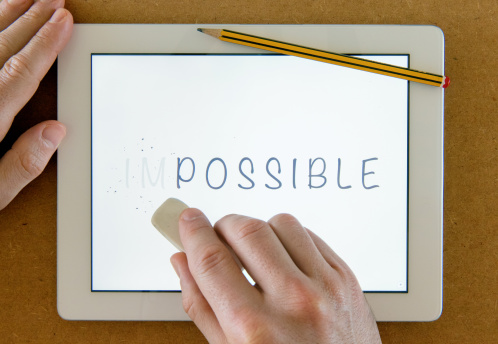
As a confirmed New Yorker subscriber, I enjoy the cartoons as much as the writing. Indeed, the cartoons alone would justify my subscription. Earlier this year, there was a drawing of a customer addressing a florist.
“I want some flowers that say, ‘Here! Have some frickin’ flowers!'”
For a lot of couples about to enter into a dissolution of their marriage, the holidays are a time of high anxiety. Often, both spouses know it’s coming–soon–but call a truce in order not to wreck the children’s Christmas.
According to some of my former clients who have done that, the whole holiday season felt like, “Here! Have a frickin’ truce!”
Tense, hollow, sarcastic. Anxiety-ridden, courtesy of the Unknown.
A close friend who knows about my practice once asked me, “What’s the most important thing you can tell someone who comes in to see you about a divorce?”
“Well, it will depend on what’s most important to that person at that moment, but, generally speaking, I’d want them to know it’s going to be all right,” I said.
“Isn’t that a little misleading? I mean, you don’t know anything about who they’re married to, or who that person’s lawyer is, or anything.”
“Well, I know this: when they talk to me, they’re living in a situation that’s become unbearable, a situation they know very well. And it’s bad enough that they’re talking to me about an Unknown–the divorce–that they’d rather deal with. I actually did once ask a client who was complaining about how long it was taking and how much it was costing whether he’d like to dismiss the action and stay married. He looked at me like I had two heads. ‘Not on the longest day you live,’ he said.”
So the goal was not an issue. By the way, that was before I began doing Collaborative cases. But my point is that the divorce itself will end some day, and probably in less than a year. And after it’s over, that person will go on with their life.
Most of the time, the people who come to me know that I do mostly Collaborative cases, where the couples have to agree on what happens before anything can happen, and where the goal is to agree on all the terms of the divorce. So they each have to give their spouse a reason to agree to what they’re seeking. More importantly, they have many opportunities over the weeks of that case to refine the conversation, discover what’s at the heart of their goals, and explore different ways of satisfying their spouse’s interests.
The upshot is that by the time they do reach all their agreements, they have talked everything through–usually multiple times–and they have a set of agreements they can live with. And things going forward are going to be all right! They can take some reassurance in that because their discussions were all based on their actual situation, not what they wish their situation was. They’ve spoken with their lawyers and they understand what the courts can do and what they won’t do.
In the Decree, under “real estate,” the court simply can’t award to the spouse who had an affair “the hottest corner of Hell.” For one thing, there’s no legal description. But if their husband or wife insists that this is the only appropriate residence for them, post-decree, I know that person will never succeed in a Collaborative case. I also know that person won’t “succeed” in court, either. And, finally, I know that person could care less if things turn out “all right,” because their highest priority is to give back the pain they feel to the person who, they believe, caused it. They almost certainly will get more help from a therapist than a lawyer.
But for the potential client who is most interested in ending their marriage, attending to their affairs, and starting a new life, history teaches us, time and again, that, really, it will be all right.
At least, that’s what my clients tell me.
 Every once in awhile a movie comes along that gives us an important glimpse into the world of divorce. Richard Linklater’s movie Boyhood is one of those rare films. It tells the story of a divorced family over a period of twelve years in a way that has moved audiences and impressed critics all over the world. It won the Golden Globes and Critics Award for Best Picture and is one of the favorites to win the Oscar for best picture as well.
One of the unique features of the movie is that it was filmed over a period of 12 years, so you actually watch the boy grow from age 6 to 18. Seeing the real actors grow over time does seem to make it feel more real and by the end of the film the viewer gets a powerful sense of how this world feels, particularly for the children. Parents who have been through a divorce, or who see the possibility of divorce, are likely to be particularly moved by the film.
While the movie clearly shows the pain and difficulty that the children face from living in two homes, and in having to adapt to new step-parents, it is not a grim account designed to make us feel that children of divorce are doomed. Indeed, Linklater, who acknowledges that the movie is based loosely on his life, says he was more interested in just showing that, for many families this world is very real. Over the twelve years, the boy, and his older sister, face many of the same issues faced by most children; the fact that they experienced those issues in separate homes adds a different dimension to their lives but, at least in this movie, does not devastate the family.
Without spoiling the movie, it can be said that the divorced parents in the movie, while clearly imperfect, work through their life experiences without intense bitterness toward each other and, in the end that seems to have made all of the difference. I have, over the years, observed divorcing parents who never truly overcame their grief or anger. When I imagine the “Boyhood” story with these parents, I realize the story would have a completely different feeling.
For me one of the messages that the movie underscores is that divorcing parents can be imperfect, and they can make the mistakes that we all make; but if their love of their children prevails, and they come to resolve their issues of grief and anger, their children can thrive.
In my 32 years as a divorce attorney, I have witnessed every variation of the “Boyhood” story. My observations have convinced me that, for most divorcing parents, the method they choose for their divorce can make all of the difference. When it comes to divorce, some sadness, fear, and anger are inevitable. However, choosing a process that will help you resolve those issues, rather than inflame these emotions is crucial. To learn more about your choices, go to www.collaborativelaw.org or www.divorcechoice.com.
Every once in awhile a movie comes along that gives us an important glimpse into the world of divorce. Richard Linklater’s movie Boyhood is one of those rare films. It tells the story of a divorced family over a period of twelve years in a way that has moved audiences and impressed critics all over the world. It won the Golden Globes and Critics Award for Best Picture and is one of the favorites to win the Oscar for best picture as well.
One of the unique features of the movie is that it was filmed over a period of 12 years, so you actually watch the boy grow from age 6 to 18. Seeing the real actors grow over time does seem to make it feel more real and by the end of the film the viewer gets a powerful sense of how this world feels, particularly for the children. Parents who have been through a divorce, or who see the possibility of divorce, are likely to be particularly moved by the film.
While the movie clearly shows the pain and difficulty that the children face from living in two homes, and in having to adapt to new step-parents, it is not a grim account designed to make us feel that children of divorce are doomed. Indeed, Linklater, who acknowledges that the movie is based loosely on his life, says he was more interested in just showing that, for many families this world is very real. Over the twelve years, the boy, and his older sister, face many of the same issues faced by most children; the fact that they experienced those issues in separate homes adds a different dimension to their lives but, at least in this movie, does not devastate the family.
Without spoiling the movie, it can be said that the divorced parents in the movie, while clearly imperfect, work through their life experiences without intense bitterness toward each other and, in the end that seems to have made all of the difference. I have, over the years, observed divorcing parents who never truly overcame their grief or anger. When I imagine the “Boyhood” story with these parents, I realize the story would have a completely different feeling.
For me one of the messages that the movie underscores is that divorcing parents can be imperfect, and they can make the mistakes that we all make; but if their love of their children prevails, and they come to resolve their issues of grief and anger, their children can thrive.
In my 32 years as a divorce attorney, I have witnessed every variation of the “Boyhood” story. My observations have convinced me that, for most divorcing parents, the method they choose for their divorce can make all of the difference. When it comes to divorce, some sadness, fear, and anger are inevitable. However, choosing a process that will help you resolve those issues, rather than inflame these emotions is crucial. To learn more about your choices, go to www.collaborativelaw.org or www.divorcechoice.com.  Every once in awhile a movie comes along that gives us an important glimpse into the world of divorce. Richard Linklater’s movie Boyhood is one of those rare films. It tells the story of a divorced family over a period of twelve years in a way that has moved audiences and impressed critics all over the world. It won the Golden Globes and Critics Award for Best Picture and is one of the favorites to win the Oscar for best picture as well.
One of the unique features of the movie is that it was filmed over a period of 12 years, so you actually watch the boy grow from age 6 to 18. Seeing the real actors grow over time does seem to make it feel more real and by the end of the film the viewer gets a powerful sense of how this world feels, particularly for the children. Parents who have been through a divorce, or who see the possibility of divorce, are likely to be particularly moved by the film.
While the movie clearly shows the pain and difficulty that the children face from living in two homes, and in having to adapt to new step-parents, it is not a grim account designed to make us feel that children of divorce are doomed. Indeed, Linklater, who acknowledges that the movie is based loosely on his life, says he was more interested in just showing that, for many families this world is very real. Over the twelve years, the boy, and his older sister, face many of the same issues faced by most children; the fact that they experienced those issues in separate homes adds a different dimension to their lives but, at least in this movie, does not devastate the family.
Without spoiling the movie, it can be said that the divorced parents in the movie, while clearly imperfect, work through their life experiences without intense bitterness toward each other and, in the end that seems to have made all of the difference. I have, over the years, observed divorcing parents who never truly overcame their grief or anger. When I imagine the “Boyhood” story with these parents, I realize the story would have a completely different feeling.
For me one of the messages that the movie underscores is that divorcing parents can be imperfect, and they can make the mistakes that we all make; but if their love of their children prevails, and they come to resolve their issues of grief and anger, their children can thrive.
In my 32 years as a divorce attorney, I have witnessed every variation of the “Boyhood” story. My observations have convinced me that, for most divorcing parents, the method they choose for their divorce can make all of the difference. When it comes to divorce, some sadness, fear, and anger are inevitable. However, choosing a process that will help you resolve those issues, rather than inflame these emotions is crucial. To learn more about your choices, go to www.collaborativelaw.org or www.divorcechoice.com.
Every once in awhile a movie comes along that gives us an important glimpse into the world of divorce. Richard Linklater’s movie Boyhood is one of those rare films. It tells the story of a divorced family over a period of twelve years in a way that has moved audiences and impressed critics all over the world. It won the Golden Globes and Critics Award for Best Picture and is one of the favorites to win the Oscar for best picture as well.
One of the unique features of the movie is that it was filmed over a period of 12 years, so you actually watch the boy grow from age 6 to 18. Seeing the real actors grow over time does seem to make it feel more real and by the end of the film the viewer gets a powerful sense of how this world feels, particularly for the children. Parents who have been through a divorce, or who see the possibility of divorce, are likely to be particularly moved by the film.
While the movie clearly shows the pain and difficulty that the children face from living in two homes, and in having to adapt to new step-parents, it is not a grim account designed to make us feel that children of divorce are doomed. Indeed, Linklater, who acknowledges that the movie is based loosely on his life, says he was more interested in just showing that, for many families this world is very real. Over the twelve years, the boy, and his older sister, face many of the same issues faced by most children; the fact that they experienced those issues in separate homes adds a different dimension to their lives but, at least in this movie, does not devastate the family.
Without spoiling the movie, it can be said that the divorced parents in the movie, while clearly imperfect, work through their life experiences without intense bitterness toward each other and, in the end that seems to have made all of the difference. I have, over the years, observed divorcing parents who never truly overcame their grief or anger. When I imagine the “Boyhood” story with these parents, I realize the story would have a completely different feeling.
For me one of the messages that the movie underscores is that divorcing parents can be imperfect, and they can make the mistakes that we all make; but if their love of their children prevails, and they come to resolve their issues of grief and anger, their children can thrive.
In my 32 years as a divorce attorney, I have witnessed every variation of the “Boyhood” story. My observations have convinced me that, for most divorcing parents, the method they choose for their divorce can make all of the difference. When it comes to divorce, some sadness, fear, and anger are inevitable. However, choosing a process that will help you resolve those issues, rather than inflame these emotions is crucial. To learn more about your choices, go to www.collaborativelaw.org or www.divorcechoice.com. 




 Collaborative law requires experienced professionals and clients willing to work together to find resolutions for their family law matters. It is a unique, non-adversarial process that provides an alternative to a traditional, litigation. It is a respectful process that depends upon four main tenants.
Collaborative law requires experienced professionals and clients willing to work together to find resolutions for their family law matters. It is a unique, non-adversarial process that provides an alternative to a traditional, litigation. It is a respectful process that depends upon four main tenants.




